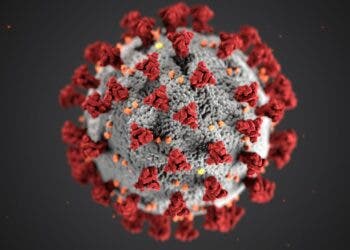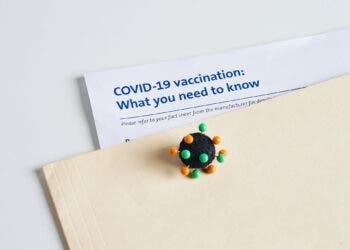Three doses of the Moderna vaccine appear to provide significant protection against the new Omicron variant, the company said based on new data that has not yet been peer-reviewed. The announcement comes similar results were reported for the Pfizer/BioNTech vaccine: two doses offer little protection, but the third one does the trick.

Preliminary data from laboratory tests found that the booster from Moderna currently being used in the US and elsewhere provides increased antibody levels that can neutralize the virus. The pharmaceutical company said it’s currently working on an Omicron-specific booster (with clinical trials starting in 2022), but some experts believe the special booster may not be necessary, as even the normal dose seems to work fine.
While two shots of the vaccine generated low levels of neutralizing antibodies against Omicron, a 50-microgram booster increased them 37-fold, Moderna said. A 100-microgram booster led to even higher antibody levels – more than 80 times compared to pre-boost level.
US regulators have so far authorized a 50-microgram booster of Moderna and a 100-microgram version for the first two doses. Moderna said the 100-microgram booster was safe and well tolerated, but with a trend toward more frequent adverse reactions, adding that it will now be up to governments and regulators to decide on its authorization.
“The dramatic increase in COVID-19 cases from the Omicron variant is concerning to all. However, these data showing that the currently authorized Moderna COVID-19 booster can boost neutralizing antibody levels 37-fold higher than pre-boost levels are reassuring,” Stéphane Bancel, Chief Executive Officer of Moderna, said in a statement.
Moderna’s news comes after the Pfizer/BioNTech booster was also found to provide a strong protection against the Omicron variant. Pfizer CEO Albert Bourla said earlier this month “the best course of action” to address a further spread of the Omicron variant was to get as many people as possible vaccinated with two doses as well as a booster.
There are many uncertainties regarding the new variant, including its relationship with severe illness and its ability to dodge the body’s defenses. As Moderna, they are now working on a new vaccine specific for the Omicron variant, which should be ready in 2022 after approval from regulators.
[Read: Here’s what we know about Omicron so far]
A growing spread
The new Omicron variant was first identified in South Africa in late November, though it may have emerged in another area. Since then, researchers and pharmaceutical companies have raced to better understand its properties and the risks that it represents. Preliminary data suggests Omicron spreads faster than the Delta variant and that can infect people immune to other variants.
Omicron has already been detected in 89 countries, with a “substantial growth advantage” over the Delta variant (which it seems to be displacing) the World Health Organization (WHO) said. The WHO classified Omicron as a variant of concern earlier this month, with cases currently doubling every 1.5 to 3 days in places where there is community spread, WHO said.
Coronavirus cases are growing fast across Europe, largely driven by the Omicron variant. Many countries are imposing tighter restrictions to try to curb the virus, such as orders to work from home and limit opening hours in restaurants.. In the US cases are also rising rapidly, with Washington DC and New York reporting record daily numbers last Friday.






